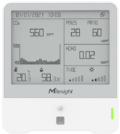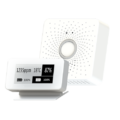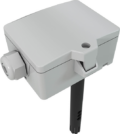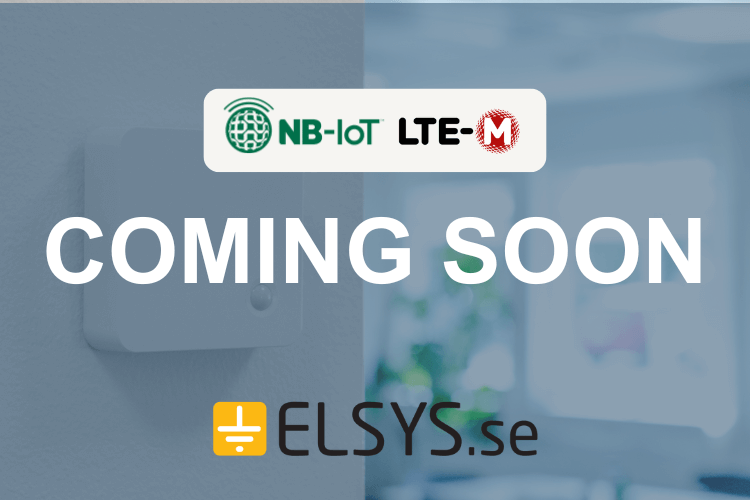Monitoring room air with CO2 sensors

Indoor air quality has a significant influence on our well-being and performance. Headaches, tiredness and concentration problems can occur if the air is "bad". Good indoor air quality is therefore important. It not only keeps us awake, but also promotes productivity and creativity. Furthermore, the spread of viruses is reduced in well-ventilated rooms and a possible risk of infection is reduced, especially in the cold season. In addition to temperature and humidity, the quality of indoor air is measured primarily by the CO2 content.
The indoor air quality can be constantly monitored by installing CO2 sensors in rooms. If the CO2 content rises above a critical level, appropriate measures can be taken, such as ventilation or the installation of an air purifier. In this way, you can ensure a healthy and safe environment in the office or other indoor spaces.
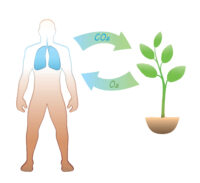
What is CO2 and how does it affect indoor air quality?
CO2 or carbon dioxide is a colorless and odorless gas that occurs naturally in our atmosphere. It is produced, among other things, when we exhale, but also when fossil fuels such as coal, crude oil or natural gas are burned. The CO2 content is measured in parts per million (ppm). In order to get a feel for the amount of CO2 When we exhale an average of around 240 milliliters of carbon dioxide per minute. This means that just one person can increase the CO2 content in a room to 1,000 ppm in a short space of time.
Symptoms of discomfort such as headaches and poor concentration can occur at levels as low as 1,000 ppm. Especially in places where many people come together in a relatively confined space, i.e. in schools, offices and conference rooms etc., CO2 sensors therefore often detect elevated CO2 values.
How do CO2 sensors work?
Some sensors use infrared technology, which sends a beam of light through the air. Carbon dioxide has the property of absorbing infrared light, which leads to a reduction in light intensity. The CO2 concentration can be determined based on the amount of light transmitted.
There are also so-called NDIR sensors. These are a special type of infrared sensor that are designed to react specifically to CO2. They use an infrared light source, an interferometer and a detector. The light is sent through a gas sample and the detector measures the intensity of the light after it has passed through the sample. The presence of CO2 molecules leads to characteristic absorptions in the infrared range, which are recorded by an interferometer. The measurements are then used to determine the CO2 concentration.
Other sensors use chemical reactions of the CO2 to measure the content. This change can be measured electrically, optically or in other ways. For example, pH-sensitive materials can be used whose properties change when they come into contact with CO2.
CO2 sensors are therefore useful tools for monitoring continuously good indoor air quality and for controlling ventilation systems in buildings.
What areas of application are there for CO2 sensors?
CO2 sensors have a wide range of applications:
| Field of application | Description |
|---|---|
| Indoor air quality | in buildings, schools, offices and other indoor spaces to monitor indoor air quality and ensure a healthy indoor climate. If the CO2 content rises, this may indicate inadequate ventilation. |
| HVAC control (heating, ventilation, air conditioning) | in heating, ventilation and air conditioning systems to control ventilation and air circulation in buildings. This enables energy-saving and efficient temperature control. |
| Industrial process control | in industrial applications to monitor the CO2 content in process gases. This can be relevant in the food and beverage industry, pharmaceutical production, the chemical industry and other areas. |
| smart agriculture | in greenhouses to improve the CO2 supply for plants. This can promote plant growth and increase crop yields. |
| Environmental monitoring | in safety-critical applications to monitor potentially dangerous CO2 concentrations, e.g. in storage rooms or in the chemical industry. |
| Security | for recording CO2 emissions at weather stations |
| Medicine | for monitoring the breathing air of patients |
Measuring CO2 content with LoRaWAN sensors
An increasingly popular and widely used technology among CO2 sensors available on the market is LoRaWAN wireless technology. The combination of CO2 sensors with LoRaWAN enables wireless monitoring of CO2 concentrations in real time and is particularly useful in applications where decentralized monitoring or rapid response to changes in air quality is required. This can be useful in smart city projects, agriculture, building automation systems and many other application areas. LoRaWAN is optimized for battery-powered operation, which means that the radio-based CO2 sensors are very energy efficient, so the battery life can be up to 10 years. A CO2 sensor with LoRaWAN measures the CO2 content in the environment and transmits the data to a network server via a LoRaWAN gateway. The data can then be sent to a cloud platform where it can be stored, analyzed and visualized. This makes it possible to set up alarms and analyze the data in real time or historically, as well as track trends.
Some sensors have integrated LED lamps that work according to the traffic light system. You can quickly and easily see the current CO2 level in the room based on the color of the LED. Alternatively, CO2 sensors can be integrated directly into the building management system and the ventilation process can be controlled automatically. This allows ventilation to be optimized immediately and a healthy indoor climate to be created.
CO2 sensors in the m2m IoT store
We offer a wide range of LoRaWAN sensors in our online store. Many of the CO2 sensors measure the ambient temperature and humidity in addition to the CO2 content. We present a selection of our sensors as examples. You can find even more models in our m2m IoT store.
AM319 9in1 Indoor LoRaWAN sensor with display
Manufacturer: Milesight
The AM319 is a compact sensor for monitoring the indoor climate to measure: Temperature, humidity, light, CO2 concentration, O3 content, TVOC, air pressure, PM2.5, PM10 and motion. The data is displayed in real time on the E-Ink screen. The AM319 series is often used in offices, stores, classrooms, hospitals, etc.
LoRaWAN indoor environmental sensor with CO2 traffic light
Manufacturer: enginko
The MCF-LW12CO2E LoRaWAN environmental sensor for indoor use records six parameters at once: CO2, pressure, light, humidity, temperature, VOC. A lower and upper CO2 threshold value for the LED traffic light can be set on the sensor. This allows the current air quality to be displayed quickly and easily.
BREEZE CO2 LoRaWAN sensor with display
Manufacturer: Tektelic
The Breeze Sensor is a LoRaWAN sensor for monitoring indoor air quality. It records the CO2 concentration, temperature, humidity, air pressure and light intensity of the ambient light in real time. The data is shown in real time on an E-Ink display. The sensor is available with and without a display.
LK+ LoRaWAN air quality sensor for ventilation ducts
Manufacturer: Thermokon
The LK+ air quality sensor is used to record the CO2 content, temperature and humidity in ventilation ducts. Analog 0..10 V outputs for a maximum of 3 values are available for direct connection to a DDC or a monitoring system.
Ventilating as needed can be the solution!
Discussions about whether, how and when it makes sense to ventilate a room have arisen particularly since the Covid-19 pandemic. At that time, ventilation systems were extensively retrofitted and mobile air filter units were set up to prevent a possible coronavirus infection. Above all, schools needed a quick, uncomplicated solution to control air quality. This is because the risk of coronavirus transmission increases significantly when many people come together for long periods of time - especially in enclosed spaces. This applies to classrooms, offices, meeting rooms, cinemas and waiting rooms. However, adequate ventilation and regular air exchange should also be ensured in production and storage rooms or transport environments.
